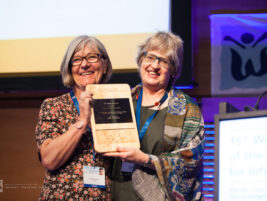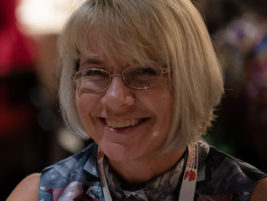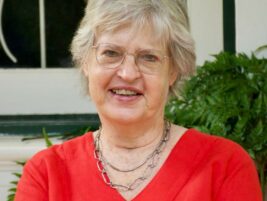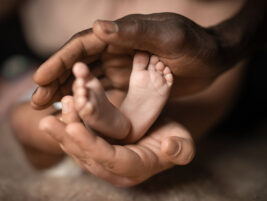In the name of the scientific committee, I want to make a call for interested colleagues to participate in plenary interfaces in the Leipzig conference in 2010. I will describe what we see as necessary if not sufficient conditions for successful interface debates. But first, let me give a brief narrative of the history of this concept.
In 1991, Serge Lebovici asked me to organize in Lausanne, Switzerland, a study group with Daniel Stern and colleagues who had contrasting perspectives on infants and their families. We met six months later with Dan Stern, as developmentalist, Serge Lebovici, his colleague Martine Lamour and Dieter Bürgin, from the University of Basle, as psychodynamicians ; and John Byng-Hall, Antoinette CorbozWarnery and myself, as family therapists. Antoinette and myself also served respectively as clinician and researcher for a non-clinical family with whom we were to work. The parents were participating with their son in our longitudinal study on the development of family communication in Lausanne and accepted to be part of our study group. They were interested in learning about our field and about their family. Their presence at work sessions challenged our modes of communication.
We decided to focus on an objective behavioral event, an “anchor event” as the point of reference for all of the diverse explorations of the material. It had to be highly significant in the family’s development from each of our perspectives. It occurred at a transition point in the Lausanne trilogue play of the family, when the partners moved from a “2+1” play part between mother and baby, with the father as third party, and the “3- together” play part, when the father joined the mother to play with the baby. Starting with this microsequence at 3 months, we repeated the interviews on the same microsequence at 12 months.
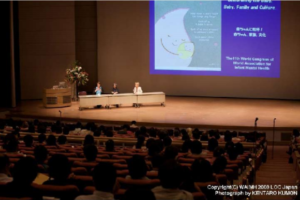
We watched together the videosequence after everyone had described it in their own language and came to a common description of the observable interaction during these 30 seconds, based on microanalysis. We planned four interviews with the family: Dan Stern would begin by his “microanalytic interview” with the couple, Serge Lebovici with a psychodynamic one, Dieter Burgin with a culturally oriented one, and John Byng-Hall with a family-script one. Our main goal was to draw relationships between different levels to approach the nuclear family : behavioral interactions, their subjective and unconscious meanings, and their intergenerational bases, to arrive at a common language and shared concepts permitting more fruitful exchanges between us. The interviews were videotaped and transcribed and each of us wrote a report on their own level of description, trying to answer the question: how does “triadification”, as we called it at that time, namely the move between 2+1 and 3-together, occur at this particular level. Then we attempted to find the correspondances between levels. The results of this work were presented in the Waimh Tampere conference and published in its IMHJ special issue along with a thoughtful and challenging discussion by Robert Emde.
The group met twice a year for three years. Its relational history was marked by friendship, playfulness, and hot debate, oscillating between struggles with differences and coming to joint views. Incidentally, in the beginning, the most salient differences between the group members were between psychodynamic and family orientations. They progressively gave way to differences between men and women, whatever their perspectives. Note that after the first year of meeting, the parents kindly advised us that they were learning very much from the interviews, but would prefer not to attend our (sophisticated) discussions.
This adventure was the inspiration for the plenary interfaces organized in the Paris and Yokohama Waimh conferences. The main idea was to present in the afternoon interface plenary debate a clinical case illustrating from different perspectives the theme of the morning plenary lecture.
Three key rules were defined: 1. Included in the international debate team would be three partners: one case provider and two case presenters with different orientations. 2. Work was to start on the basis of a videobased observation only, in order to enlighten the resources and limits of behavioral observation; the other data (interviews, clinical data) would be added later. 3. The case presenters were to do their specific analysis first “blindly”, namely without access to the other video and clinical data. They would confront the results of their analysis with those of the other participants only after delivering their first report, to allow to sharpen the specific contribution of a given port of entry in relation to others.
In Paris, three 90 minutes plenary interface debates took place. They followed the conference agenda focusing on the transition to parenthood (day one), first year of infancy (day two) and toddlerhood (day three). By way of an example, the first one was introduced by a plenary lecture on the family triad. It focused on the interfaces between the assessment of the mother-infant and father-infant dyads in dialogue and the father-mother-infant triad at three months in a clinical family: what were the specific contributions of the dyadic versus the triadic ports of entry (see the Waimh Paris conference IMHJ special issue)?.
Given the audience had appreciated this format, it was also proposed in the Yokohama conference. The first interface debate was articulated with Mechthild Papousek’s plenary lecture on the infant’s strengths and resources in developmental disorders. Entitled “A multifaceted look at self regulatory capacities in the etiology and treatment of early persistent crying”, it focused on a clinically referred case of a 3 and half monthold boy with early excessive crying. Video-based observations of motherinfant and father-infant interactions in different contexts and of infant behavior during a semi-structured neuropediatric examination were analyzed from three different perspectives: the infant’s developing self-regulatory capacities (Mechthild Papousek, Germany), the impact of the infant’s strengths and weaknesses on family relationships (Sandra SerpaRusconi, Switzerland) and on the dyadic psychodynamic representations (Miri Keren, Israel). The three presenters fruitfully discussed to which degree and how these different perspectives converged, overlapped, or contradicted each other and could be integrated to form a basis for a comprehensive therapeutic intervention.
The second debate: “Interfaces between the internal words of mother and child and the observable interaction: the case of a young child with autism spectrum disorder”, presented a research case of a young child diagnosed with Autism spectrum disorder and his mother. It explored the interplay between the internal representations of both mother and child in relation to one another (Smadar Doley) and their observable interactions with one another (Jean Wittenberg, Canada). It addressed the following question: How is the mother’s inner representation of her child (as reflected in her reaction to diagnosis and her insightfulness) and the child’s security of attachment with the mother (as reflected by his use of the mother as a source of comfort) reflected in these interactions? The discussion (David Oppenheim) explored in depth the consistencies and inconsistencies between the data on inner representations and the interaction observations and their implications for intervention.
The third debate: “HIV mother-tochild transmission in south Africa: stigma, grief and culture” dramatically showed what an overwhelming problem HIV-AIDS is, especially in the impoverished communities of South Africa. Astrid Berg described through video clips from two cases her clinical experience with this patient population and showed how early identification and medical treatment, together with ongoing psychological and social support can change the course of this disease from inevitably ending in death to ongoing living. Two other experienced clinicians, Campbell Paul, form Australia, and Neil Boris, from the USA, reflected on the infant’s as well as on the clinicians’ experiences through different clinical lenses, enlightening how these human dramas stand beyond our ordinary clinical perspectives. This larger lens gave the conference organizing committee incentive to devote a plenary session to this type of issue and thus increase our awareness of them as clinicians.
In summary, the debate starts from a video-based observation of a clinical case, coupled with the day’s theme. Among the possible scenarios are a single video sequence analyzed through different orientations ; several sequences showing various functional levels of the same family (e.g. family versus dyadic play) and/or in different contexts (play, separationreunion, care, medical examination, etc); several sequences showing the longitudinal development of the case (e.g. prenatal-post-natal; or any other scenario involving different perspectives on a common issue.
We see the interface debates as a process which will evolve with time and experience. At this point, in practice, the work of the team would begin by an agreement on the case and by setting an agenda to go through the steps of the work:
- agreeing on each participant’s perspective and
- on the feasibility of working with the available video material;
- doing the separate analyses;
- meeting for confronting them and
- planning the plenary presentation.
Importantly, this implies that participants agree to play the game and to invest time much in advance of the conference in this challenging, exciting and playful adventure.
We encourage interested clinicians to communicate to the scientific committee their suggestions, case material and possible themes for the Leipzig Waimh conference – no later than March 2009!
A call for participating in Interface debates
Authors
Fivaz, Elisabeth,
Switzerland




